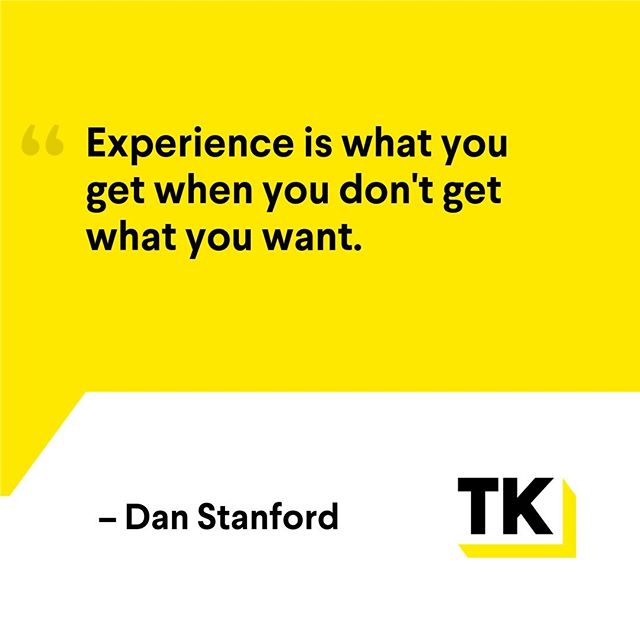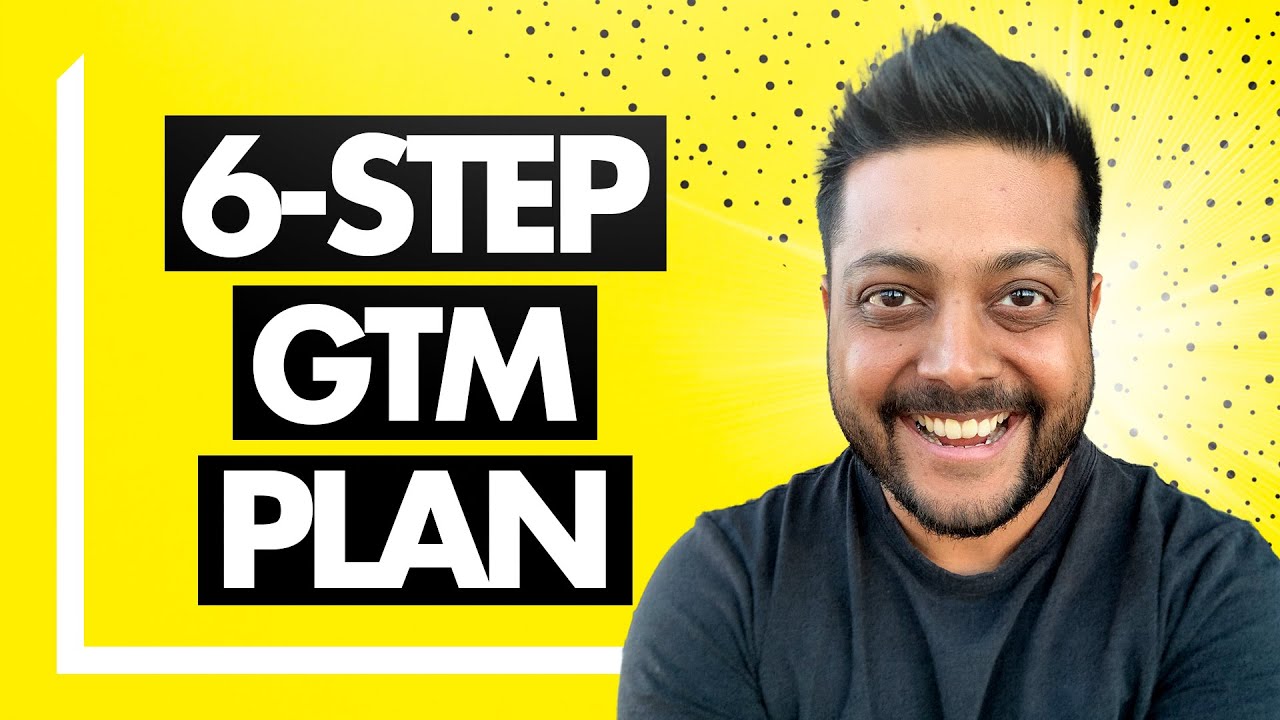What it takes to build out a Go-To-Market strategy, why you need one, and what a good one actually looks like.
If you’ve built a product, have some revenues flowing, but you’re not quite at the point where you have predictable growth… It’s time to start building a scalable Go-To-Market strategy.
I always thought I knew how to build a GTM plan. It wasn’t until I worked with some really talented Go-To-Market leaders, Marketers, and Sales Leaders that I really understood the ins and outs of a successful Go-To-Market strategy.
In the last 15+ years, I’ve been part of various Go-To-Market organizations.
I was CEO of ToutApp and was responsible for driving overall growth for the company. Then I joined Marketo (Marketo bought ToutApp) and became the SVP of Strategy. I did a quarter of running Europe, a quarter of running Australia, and a year of running alliances to help grow each of those regions and organizations.
During that time, I learned a lot about how to build proper Go-To-Market strategies. Since then, I’ve worked with over 250+ SaaS Founders in my SaaS GTM Coaching Program to implement all the components I cover inside this article.
In this article, I’ll walk you through the six steps I’ve used countlessly to build a winning Go-To-Market strategy so you can start driving scalable growth for your SaaS business.
What is a Go-To-Market Strategy?
Let’s start with the basics. What is a Go-To-Market (GTM) strategy?
A GTM strategy is basically your standard sales and marketing funnel for a SaaS business.
I get it, a lot of people don’t like the word funnel. In reality, the funnel is very much still alive. Whether you call it a customer journey or a funnel, you’re doing the same thing.
Your GTM strategy maps out how your company plans to launch your SaaS product and connect with your ideal customers effectively. It covers key areas like product positioning, target market identification, distribution channels, pricing, and the best sales and marketing approaches. Essentially, it’s the blueprint that helps you navigate the complexities of bringing your SaaS solution to the market successfully while ensuring you attract customer attention and drive sales efficiently.
Initially, the goal is to turn potential customers into leads, encouraging them to engage with you. Then, it’s about initiating sales conversations and demos to convert them. Over time, the focus shifts to upselling, cross-selling, and ensuring customer retention.
Why Do You Need a Go-To-Market Strategy?
Without an effective Go-To-Market strategy, your ideal customers won’t even know that your SaaS business even exists. You could have the most incredible product in the market, but no one would ever know about it. All your efforts will go to waste.
This is why it’s so important to build a proper GTM strategy.
When you build an effective strategy, more people realize how great of a product you built.
If you’d like to dig deeper into creating a scalable Go-To-Market strategy to reach the next step in your SaaS business’ growth goals, grab a complimentary copy of my 5-Point SaaS Growth Strategy Guide below.
Otherwise, let’s dig into the rest of the article.
Four Key Questions to Ask When Creating a GTM Strategy
There are four sets of essential questions you must ask yourself prior to creating a GTM strategy. These questions provide the necessary clarity you need to guide your strategy.
- What is your target market and what is the underserved part of that market? Who are the top competitors in that segment of the market?
- What’s the important, urgent, and frequent problem that you’re solving? And why does this problem exist? What is the big macro trend that is creating this problem in the first place?
- How would you define your ideal customer profile and initial customer profile in detail? What is your positioning, value proposition, and strategic narrative that directly resonates with that specific group of people?
- How will you implement everything you know about the market, the big macro trend, and your ICP to distill it down into running a successful Go-To-Market machine?
How to Build a Go-To-Market Strategy
There are six major steps that go into building a successful, scalable Go-To-Market strategy.
Step 1: Calculate Your Total Addressable Market (TAM)
The first step in crafting your Go-To-Market strategy is understanding your total addressable market (TAM).
You’ll need to answer questions like:
- Who is your target market?
- How do you define it?
- Are you entering a new market, or are you entering an existing one where you’ll need to differentiate yourself?
Essentially, you must pinpoint your target market and identify the urgent and important problem your SaaS product is solving. This is probably the most important part of your GTM strategy.
Although it may seem straightforward, take the time to articulate your target market succinctly in five bullet points. As you do, you’ll uncover the various nuances involved in this process.
At this point, I’ve done hundreds of strategy sessions with various SaaS Founders where I coached the nuances of finding your TAM. It’s not always obvious which direction to go.
Step 2: Research Competitors & Find the Underserved Part of the Market
When you’ve identified your target market, you’ll need to dive deeper into your new market strategy by analyzing the competition and identifying any underserved segments.
Regardless of whether you’re targeting SMBs, mid-market companies, or enterprises, you’ll likely encounter significant competition. Understanding where your competitors stand in each segment will help you identify who you can realistically compete against, and how you can effectively differentiate your offering.
For instance, if the enterprise space is dominated by established players, you might find more success focusing on SMBs or the mid-market. However, if there’s intense competition among low-cost providers in those segments, and there’s no way you can differentiate yourself, you might consider aiming for the mid-market instead.
Keep in mind that there’s a natural progression: the higher the premium, the more complex the sales process. The lower-tiered markets like SMBs often involve simpler, self-service transactions.
This kind of decision making and strategic GTM planning will do wonders for your marketing strategy.
Once you’ve analyzed the competition, you can make informed decisions around your positioning and pricing. You now know why this market exists, the market dynamics, and the gaps you can capitalize on.
Step 3: Define the Problem You’re Solving in the Market
Step 3 ties into Step 1.
When you’re initially figuring out your target market, you have to define the problem. Now, it’s time to take it a step further.
- What is the most important, urgent, and frequent problem that you’re solving?
- Why does this problem exist?
- What are the most important pain points behind this problem?
- What’s creating this problem in the first place?
- What’s the opportunity they’re after?
- What are the big changes in the landscape?
- What are the big problems that exist today that are driving this market?
The best way I know how to answer these questions is to dig into the macro trends and figure out why this target market exists.
Once you’ve identified the macro trends and answered these questions, you’ll have a comprehensive understanding of your new market. You’ll gain deeper insights into your buyer personas, understanding what drives them, and the challenges they face daily.
When you recognize the significant developments shaping their world, you can speak directly to their needs. Whether it’s an opportunity to seize or a risk to mitigate, addressing this “big thing” will catch their attention and generate interest in your software.
These insights can help clarify your mission and pinpoint the specific problems your software aims to solve, allowing you to develop a targeted action plan within your marketing strategy.
Step 4: Ideal Customer Profile and Initial Customer Profile
If you follow my YouTube channel, you’ve probably noticed that one of the top things I talk about is the importance of defining your Ideal Customer Profile and buyer personas properly. The reason I bring it up so much is because so many founders tend to overlook this step or do it incorrectly.
While they might have a brief one-liner or a couple of pain points for their ICP, they often lack a comprehensive understanding of who they’re truly targeting. They don’t actually flesh out firmographics, demographics, and all the trigger events that come with their potential customers.
When you’re building out an ICP for B2B SaaS, there are a couple of important things you need to take into account:
- Company size
- Revenues
- Location
- Tools and Software they’re already using
And most importantly, you need to look at the big macro trend that’s affecting them. Knowing the macro trend they face can help you enter the conversation they’re already having in their head about it.
Don’t forget that even if your focus is B2B, you’re still selling to people. You need to fully understand what roles you are targeting, what their ambitions are, and what they might resonate with the most when it comes to your marketing and Go-To-Market sales strategy.
As you’re building a GTM strategy, you’ll actually need to go beyond just an ideal customer profile and create an INITIAL customer profile.
This means taking into account who your first 100 customers will be.
What do they look like? How will you expand from there with a successful customer acquisition and lead generation strategy?
Building out your ideal customer profile and initial customer profile is so important. When done right, they can be the most influential growth tool for your SaaS business. It can be the key to accelerating your path to product-market fit and the next stage of growth.
This is something I help with extensively inside my SaaS GTM coaching program. I’ve seen founders completely miss the target when fleshing out their ICP. Instead of a proper ICP, many founders find themselves creating a wishlist of customers. This is why I walk the founders I coach through a 29-point data driven ICP exercise to drive clarity.
Step 5: Messaging and Strategic Narrative (AKA Your Product Marketing)
Once you’ve calculated your target market and built out your ideal customer profile, you’ll need to create an action plan for your positioning, messaging, and most importantly, your strategic narrative.
This step is commonly known as product marketing. It’s the most important aspect of your startup marketing strategy framework that you need to reach product-market fit.
There are several important questions that you actually need to answer for your GTM strategy:
- What is your positioning?
- What is your value proposition?
- What is your messaging?
- What is the strategic narrative that you can align the entire market around and actually differentiate your new or existing products and services from the rest of the market?
I often come across Founders who skip these essential steps and dive right into running ads, inbound, or outbound marketing. When I ask them about their Go-To-Market strategy, they often mention plans to hire a content person for blogging.
That alone doesn’t constitute a solid marketing strategy.
These Founders haven’t thoroughly considered their market and target audience. They also haven’t delved into their purpose, macro trends, or competitors… And, they most definitely haven’t crafted a compelling value proposition and messaging, which are critical elements for marketing success.
What will they say to potential buyers to set themselves apart? What value will they offer, and why should customers pay attention?
These are all the things that form a strong value proposition, messaging strategy, and overall strategic narrative.
Skipping this step means mobilizing without direction. You’d be firing blanks without a clear target.
Step 6: Go-To-Market Execution (AKA Your Sales & Marketing Funnel)
Upon finalizing your value proposition and overall messaging, the final step you need to take is organizing your Go-To-Market motion/implementation.
You will now figure out how to mobilize and implement your GTM strategy based on the segment of the market you are targeting and what your messaging is.
As you implement your GTM strategy, you must think about your customer journey, sales strategy, and marketing funnel – or what I like to call, an Unstoppable Sales Funnel.
There are a couple of specific questions that will help you form your implementation strategy:
- Are you going to have a marketing-driven organization or a sales-driven organization?
- Should you do outbound, inbound, or partnerships and marketplaces?
- Is it going to be inside sales, outside sales, or some sort of hybrid?
- Can you afford to hire full-time sales teams and SDRs?
I’ll help guide you through answering these questions below.
1. Marketing Driven vs Sales Driven Organization
It might seem like a simple choice, but in reality, these are two wildly different SaaS sales models with two very different growth engines.
How do you choose which one to follow?
START A TRIAL (Marketing Driven)
If you can get a user into an A-Ha moment within the first five minutes of them signing up, you should follow through with a marketing-led growth model.
The reason people use software is to reach a certain outcome.
You might not be able to help them reach that final outcome within the first five minutes they come across your product… But, if you can help them reach an A-Ha moment right after signing up, that’s when you’ll get their attention and get them to start a trial.
TALK TO SALES (Sales Driven)
If you’re in a highly competitive category and a well-defined market, getting your ideal customers to their A-Ha moment probably isn’t going to be how they make their buying decision.
When potential customers evaluate different companies, they may start with a long list of features and requirements. What will truly set you apart from the rest is establishing trust and a unique relationship.
These customers value human interaction as it helps them determine if you’re the right strategic choice above the competition. In this case, you would follow a sales-driven growth model.
2. Which Go-To-Market Model to Go After? (Direct Model vs Channel Model)
Before rolling out your Go-To-Market strategy, it’s important to consider the type of approach that will best suit your target audience and the business you’re building out.
There are really two kinds of plays you can have – direct model or channel model.
As an early-stage founder, you should only pick one. It can be enticing to try and do both, but it’s impossible to excel at either unless you really focus.
Let’s look at the main differences of both.
In a direct model, you approach customers, consumers, and prospects directly by offering your solution to their problems and encouraging them to make a purchase.
On the other hand, a channel model involves identifying individuals or entities already selling to your target customers and finding ways to have them sell your product and introduce you to potential buyers. Essentially, the channel model relies on existing distribution channels.
So, how do you decide between going direct or using channels?
In most cases, especially for early-stage companies, going direct is the preferred method.
There are a couple of reasons for this.
First, you’re too small for channel leaders to actually notice you. Often, they’ll have BizDev people. They’ll meet with you, talk about all these things, and they’ll say they’ll introduce you or resell you. In reality, they’re going to wait and see if you’re worth it and if the market loves what you’re doing or not.
Secondly, founders tend to burn a lot of calories trying to build out a channel model. It’s more enticing when you don’t have to build out a sales team and barely have to build out a marketing team. You just have to enable this channel, give them a cut of revenues, and they’ll do all the heavy lifting for you through their teams.
It’s tempting, but in the early days, most channels won’t let you in or give you the time of day. So you’re almost always better off going after a direct model.
This is especially the case if you’re trying to validate your idea, get traction, and reach product-market fit.
Once you decide to pursue a direct approach, the next question is whether to focus on inbound or outbound strategies.
What I usually recommend for early-stage founders is to begin with inbound and social tactics. Now, let’s explore the distinctions between inbound, outbound, and partnerships/markets.
Inbound
Inbound marketing typically divides into search/SEO (where users search for content and land on your page) and social (where users connect with your content on social platforms).
For early-stage businesses, it’s advisable to establish a social presence first by sharing your behind-the-scenes insights.
If your business is somewhat established with revenue, consider focusing on both search and social simultaneously to strengthen your inbound efforts.
So, why prioritize inbound?
It’s a smart move because it attracts the right people to your sphere, even if you’re not fully aware of your ICP or the precise audience that resonates with your message. By starting with inbound, you can put your message out there and gauge who engages the most with your content. Once you see who you attract, you can refine your understanding of your ideal customer and double down on what they resonate with the most.
Outbound
Once you’ve established some traction with inbound marketing, it’s time to consider implementing outbound strategies. Outbound methods typically include running ads, email campaigns, or cold calling.
However, many founders make the mistake of diving into outbound without refining their targeting or messaging, resulting in wasted resources. Ads and outbound emails are only effective when tailored to your specific audience and messaging.
Starting with outbound first is like firing a machine gun full of blanks. You’re expending energy without hitting the mark. This is why it’s so important to always start with inbound and then spin into outbound once you’ve tested your core messaging and your core ICP.
Partnerships/Markets
Once you’ve gained momentum with both inbound and outbound strategies, it’s time to explore channel partnerships. By this stage, you should have built credibility and accumulated customer success stories.
Now, you can leverage these assets to collaborate with companies that have marketing budgets targeting your audience. Approach them with your proven messaging, value proposition, and customer testimonials to facilitate partnerships.
This approach simplifies integration into their marketplaces or facilitates arrangements like co-selling, reselling, or co-marketing.
Who Is Responsible For Your Go-To-Market Strategy?
The short answer is YOU.
You, as the Founder, should be responsible for creating your own Go-To-Market strategy. This isn’t a task to outsource. It’s fundamental to understand your business strategy fully so that you may build a successful startup.
Once you’ve developed your GTM strategy, THEN you can start delegating tasks to execute it. Just be sure to track the right KPIs and continue to guide your team in the right direction. Effective execution is just as important as the strategy itself.
It never hurts to remember that strategy without proper execution means nothing.
In Conclusion
What Does a Great Go-To-Market Strategy for Startups Look Like?
If you’ve made it to the end of this very long and detailed blog post, you should already know the answer to this question.
But, let’s recap exactly what makes a GREAT GTM strategy and how your marketing and product strategy come together.
Step 1: Dig into your total addressable market. Are you going after a new market or an already established one with key players?
Step 2: Figure out the underserved part of the market and the niche segment that you can thrive in. Who are the main competitors in that segment and how will you differentiate yourself from them?
Step 3: Define the urgent, important, and frequent problem that your potential customers are facing. What is the big macro trend and the major pain points you’re addressing?
Step 4: Create your Ideal Customer Profile and your Initial Customer Profile in detail. You need to understand who your potential customers are inside and out. What their goals and aspirations are and what is going to resonate with them the most so you can flesh out your strategic narrative.
Step 5: Figure out your positioning, value proposition, and your messaging. How can you align your narrative around the market? How will you differentiate yourself from the rest?
Step 6: Lastly, implement your GTM strategy and kick-start your sales and marketing funnel. You need to figure out which route you’ll be focusing on first – outbound, inbound, or partnerships and marketplaces and start doubling down.
If you’re a visual person, make sure to watch my 6-Step Go-To-Market Strategy video here:
What really makes GTM strategies great is the execution and the ability to implement your strategy in an efficient and unstoppable way, which is exactly what I teach in my Go-To-Market program.
In this program, I help founders grow and scale their SaaS businesses around a proven SaaS Go-To-Market strategy framework to get to $3M ARR and beyond.
From clarifying their ideal customer profile to creating their value proposition and building and running their sales funnel to close more deals, this program is for anyone who is ready to accelerate growth in a real way.
If you’re ready to learn how to create a Go-To-Market strategy that will take your startup to the next level, you can grab a complimentary copy of my 5-Point SaaS Growth Strategy Guide below.
And remember, everyone needs a strategy for their life and their business but when you’re with us, yours will be Unstoppable.















